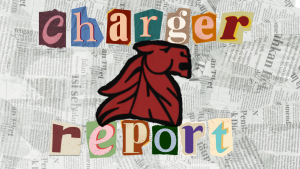The Slippery Slope of IXL

February 28, 2020
In English classes, there is one thing more feared than the infamous in-class essay: IXL. The learning tool, while also usable for other school subjects, is most often used in English for its quality lesson material and practice sessions. While it can be quite useful, students often despise the website for several reasons. So is IXL something that hinders more than it teaches?
Before jumping into all of the pros and cons, perhaps some groundwork is in order. IXL is a diagnostic tool that uses real-time personalized questions to better help students understand particular lessons at varying depths. These lessons are split into categories, which fall under alphabetized letters, which are then followed by an additional letter system and numbers after that. When users get a question correct, their ‘Smart Score’ increases. The specific amount varies, but usually falls within a few specific guidelines (more on that later). When the user answers incorrectly, the same Smart Score decreases by a certain amount – but it can never go past zero. Instructors can use the Smart Score to see how well students understand a particular concept, with an 80/100 generally being the average and 100/100 being a perfect understanding. When the Smart Score hits 90/100, users enter the ‘Challenge Zone’, where they must get ten questions consecutively correct to achieve 100/100. Any incorrect answers in this segment of a lesson results in the user falling back into the high eighties.
The Smart Score is where most students start having problems. For the most part, this is because of how the system keeps track of correct and incorrect answers. Without any additional modifiers, the standard incorrect answer will take about two correct answers to surpass. While this feels like a good concept on paper, students who struggle with a certain concept will often have hours worth of difficulties trying to surpass what bar their teacher has set for that lesson. Further, the multiple modifiers in correct scoring can be problematic. For one, the amount of points gained can vary depending on the lesson by large amounts. Further, users have to get multiple questions correct in a row to get reasonable amounts of points-per-question compared to incorrect answers in the first place. Again, these processes sound fantastic on paper, but, without an already excellent understanding of the subject material, students can quickly fall behind.
Then there’s the Smart Score’s Challenge Zone. Especially with English, where very particular grammatical choices can make or break a chain of correct answers, this area of questions can be painful to work through. Overlooking seemingly ‘correct’ parts of a phrase, or merely mistyping a word, can result in users being knocked down even further.
With all of the pain the Smart Score can bring, IXL still does a few things well. For one, users can look through an in-depth description of why they got a particular question incorrect. Further, these summaries are immediately available at the start of the lesson, meaning that users in the dark on a subject can immediately be brought up to speed. Second, IXL’s sheer amount of lessons is almost appalling. Multiple lessons deal with the various nuances of a single small rule, and the various levels mean that students, Kindergarten through the Twelfth Grade, can understand any number of subjects immediately.
Even better than the assigned lessons is IXL’s diagnostic tool. Aside from a particular lesson, IXL can test users on a subject in general, measuring progress in various ranges the same way the MAPS testing program does. This means that a student can find what they need improvement with even before they have access to the content in the classroom.

As with any program (both in-person and online), IXL has various boons and just as many banes. While the diagnostic tool proves to be efficient in multiple areas, the annoyances and difficulties that come from any number of misunderstandings can heavily impact students already having a hard time. As it is right now, IXL is a tool that can be used with the right audience and an already semi-proficient understanding. However, work will need to be done to help students that fall behind due to no fault of their own.








Andrea • Jun 11, 2022 at 12:32 AM
Great article! I think that IXL definitely has its pros and cons. I think that a lot of times it really also depends on the kids. For us IXL worked for a little bit but then we found that our kids weren’t as interested anymore, so we had to start looking for better options! After shopping around we finally landed on Beestar which has been doing a pretty awesome job for the kids. We’ve really liked it so far!
Terry • Nov 17, 2020 at 12:14 AM
I agree! IXL makes you practice back and forth to fully grasp a concept or skill. Good for enforcing what kids have learned. It works better for earnest students who want to improve their weak points. Other students tend to study in a more relaxed manner. Interesting and mixed-bag problems like what Beestar provides keep them going longer. I use both so my kids can study as long as they can before they play around.
Terry • Nov 8, 2020 at 1:58 PM
True that the Smart Score is an intensive system that students might feel a little bit harsh about; however I think it could be a good tool to train them in pressure after they have built a certain level of foundation in the academy. I would suggest students try Beestar, which is a learning website that provides problems to the learner, and it is easy to do to build up a good foundation to challenge any higher level study in the future.
Jack Thistlewood • Nov 10, 2020 at 9:38 AM
First off, thanks for replying! In regards to the comment itself, I tend to feel the same way. Since I already have a decent grasp of most lessons that teachers give their students, the IXLs don’t tend to be too much of a problem (barring some specific instances). The rigor of IXL’s Smart Score is useful for learning when there’s already a foundation in the subject being studied. In that same vein of thought, I feel like IXL is better for reinforcement than it is for learning something for the first time.